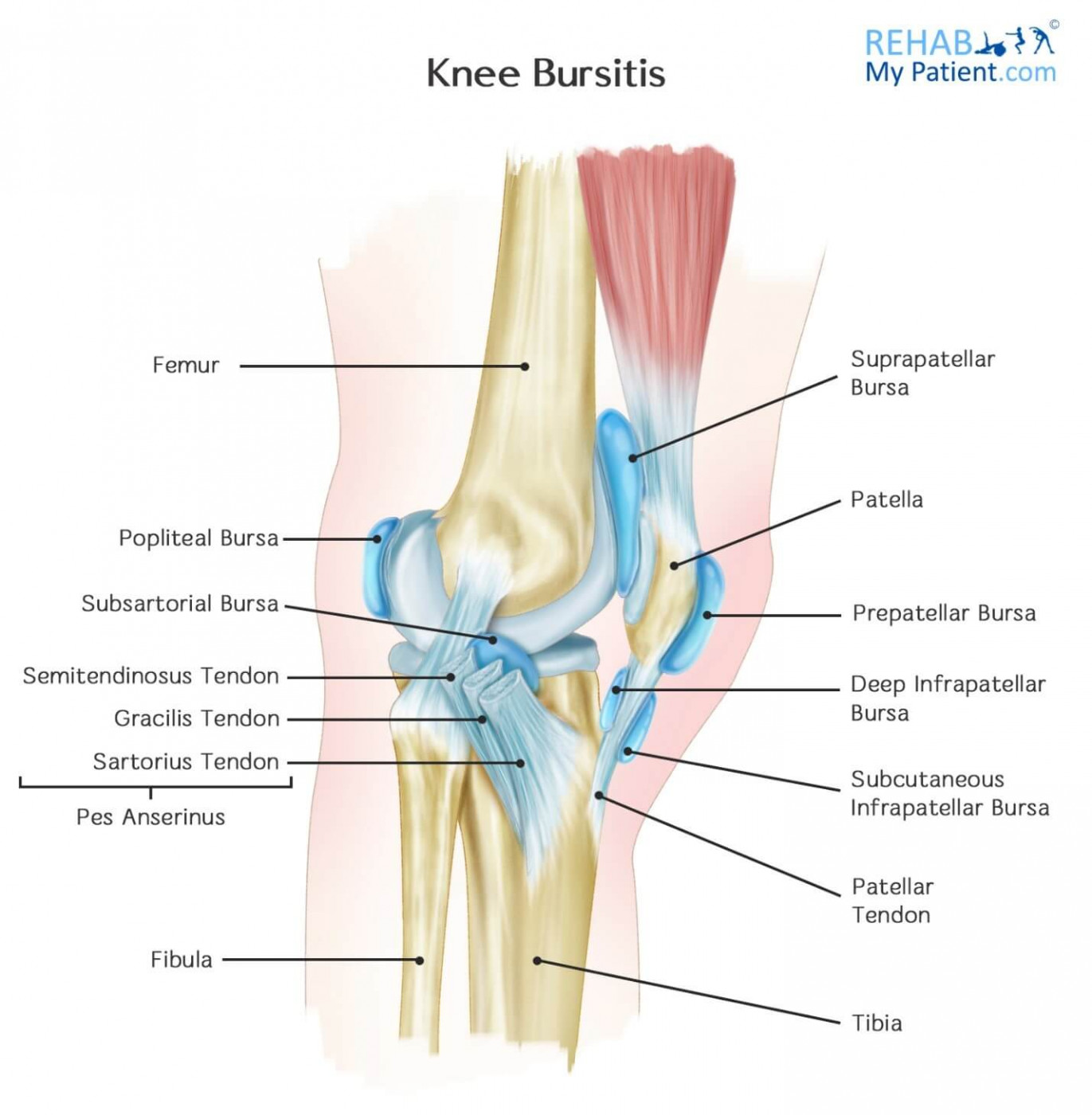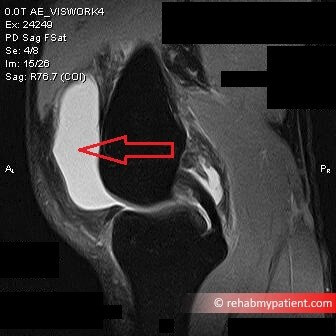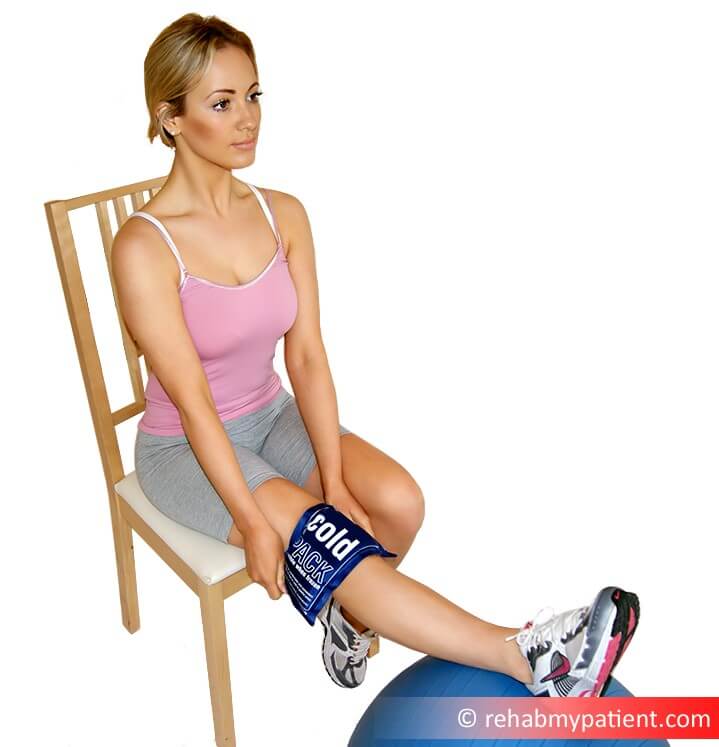Knee Bursitis
Posted on 01st May 2018 / Published in: Knee

Bursitis is an inflammation of a sack of fluid called a bursa (plural = bursae). There are lots of bursae around the knee. They help to protect all the moving parts of the knee, such as the patella (knee cap), the tendons, and the ligaments.
Bursitis often develops from overusing or continual friction and stress on the bursa itself. Bursitis tends to be the most common amongst athletes, especially in runners. Those who have osteoarthritis are also susceptible to this condition.
Several factors attribute to the development of bursitis, such as:
- Obesity
- Osteoarthritis of the knee
- Medial meniscus tear
- Out-turning of the lower leg or knee
- Improper training techniques
- Tight hamstring muscles
- Poor gait
Knee Bursitis Anatomy
The knee is one of the biggest and most complex of all joints found in the body. It joins the shin bone and the thigh bone together. The smaller bone running alongside of the tibia and the kneecap are the two other bones that complete the knee joint. Tendons keep the leg muscles and knee bones connected to enable the knee joint to move. Ligaments join all of the knee bones and deliver stability to the knee.
Bursae help to protect the moving parts of the knee. There are lots of them in the knee – actually there are about 11 bursae in each knee, but some of the more common ones are:
Popliteal bursitis (known as a Baker’s Cyst) – a knee swelling at the back of the knee. Usually occurs after surgery or injury to the knee. There is a natural pocket behind the knee where fluid can accumulate.
Prepatellar bursitis (known as housemaid’s knee) – a swelling over the front of the knee, caused by excessive kneeling.
Suprapatellar bursitis – occurs just above the knee cap.
Infrapatellar bursitis – occurs just below the knee cap.
Pes anserine bursitis – most common in overweight women aged 45+, probably because of the wider pelvis and altered gait. Occurs two inches below the inside of the knee.


Knee bursitis shown on MRI scan
How to Treat Knee Tendon Bursitis:
- Rest
Discontinue any activities where you find pain and discomfort. Try substituting with a different activity until the bursitis has had time to clear up.
- Ice
Apply ice to the affected area for 5-10 minutes at a time three to five times per day. Make sure to wrap the ice with a thin towel to prevent an ice burn from occurring on your skin. Ice is one of the best and most natural ways to reduce pain and swelling.

- Anti-Inflammatory Medication
Non-steroidal anti-inflammatory medication, aspirin or acetaminophen can help to reduce the inflammation and pain within the knee. As the inflammation goes down, the amount of pain felt will also tend to decrease. Limit the user of drugs if possible, and look for more natural methods such as ice therapy.
- Injection
It might also be necessary to have an anesthetic solution inserted into the bursa, which will often provide you with prompt relief to the affected area.
- Therapy
Physical therapy, acupuncture, and electrotherapy can all provide very good benefit for bursitis.
Tips:
- For those who are overweight, reducing weight and improving fitness can reduce a bursitis. Losing a few pounds can make a world of difference in your pain and overall health.
- Before participating in any sporting activities, make sure you take the time to stretch beforehand.
- Avoid excessive periods of keeping your knee in one position, such as being stuck in a tight seat.
- Stretching the hamstrings before you engage in any exercise or training regime will help to alleviate injuries to the area.
- If you notice the pain increasing when climbing stairs or exercising, you need to seek attention to evaluate the severity of your bursitis.
Sign UP
Sign up for your free trial now!
Get started with Rehab My Patient today and revolutionize your exercise prescription process for effective rehabilitation.
Start Your 14-Day Free Trial